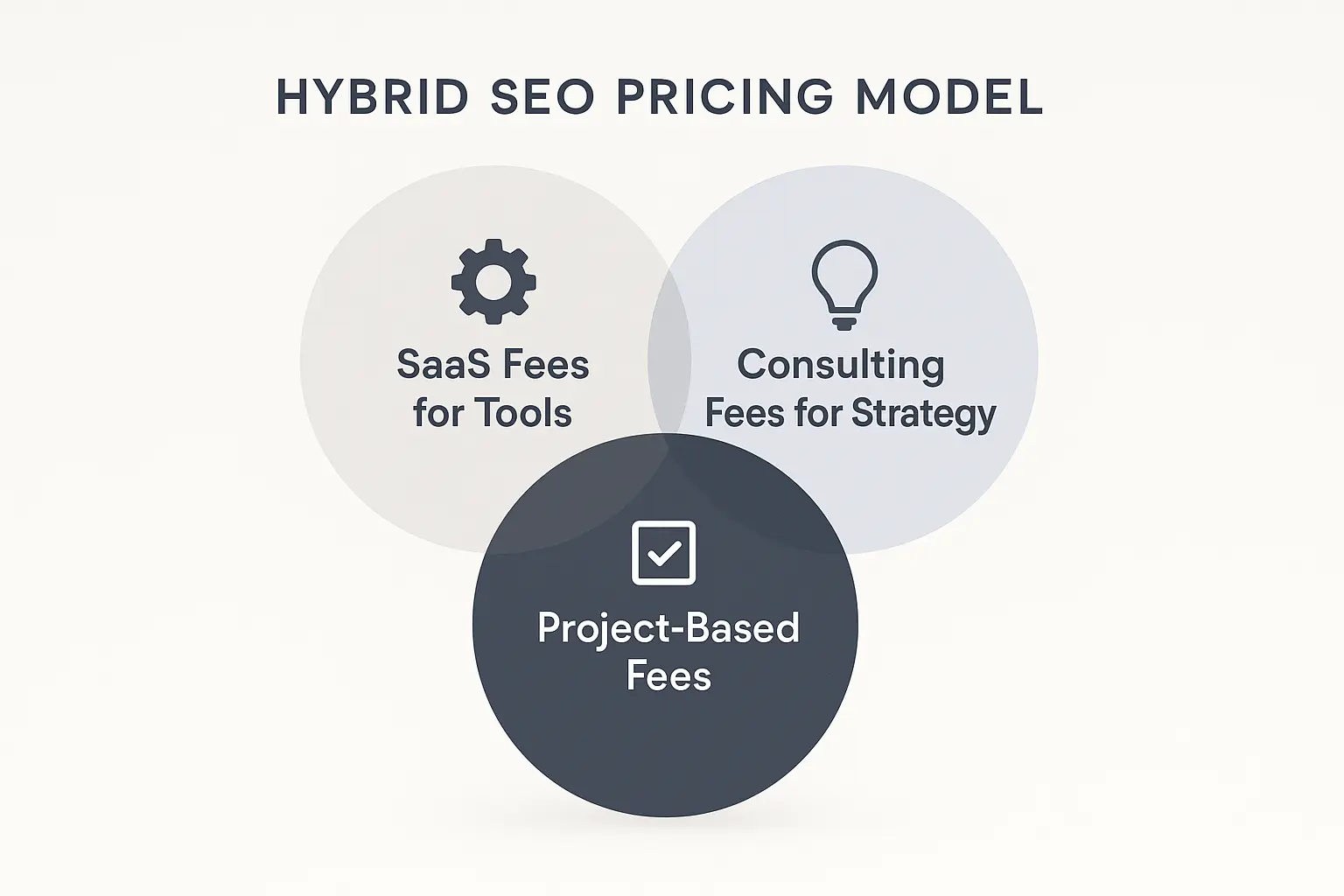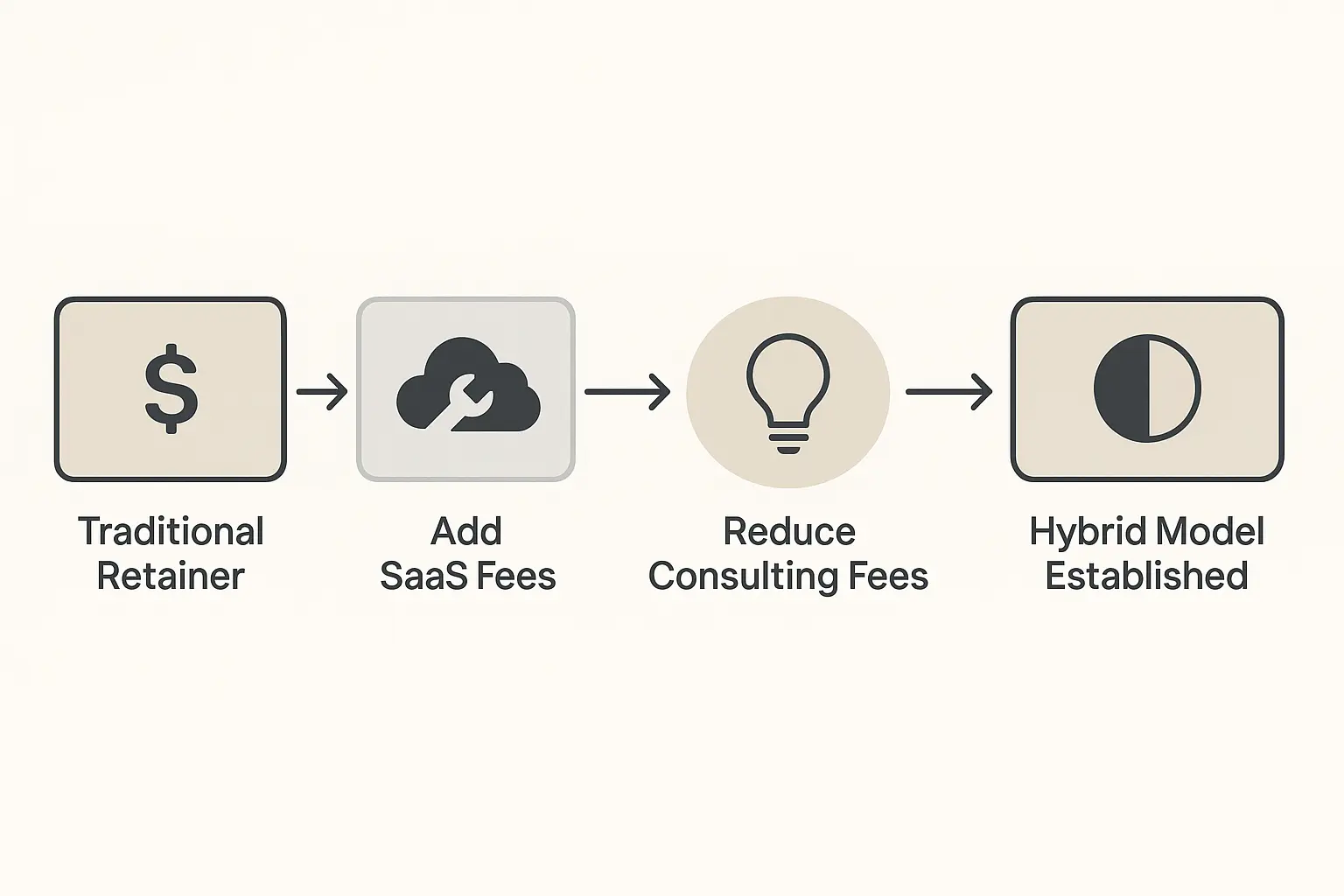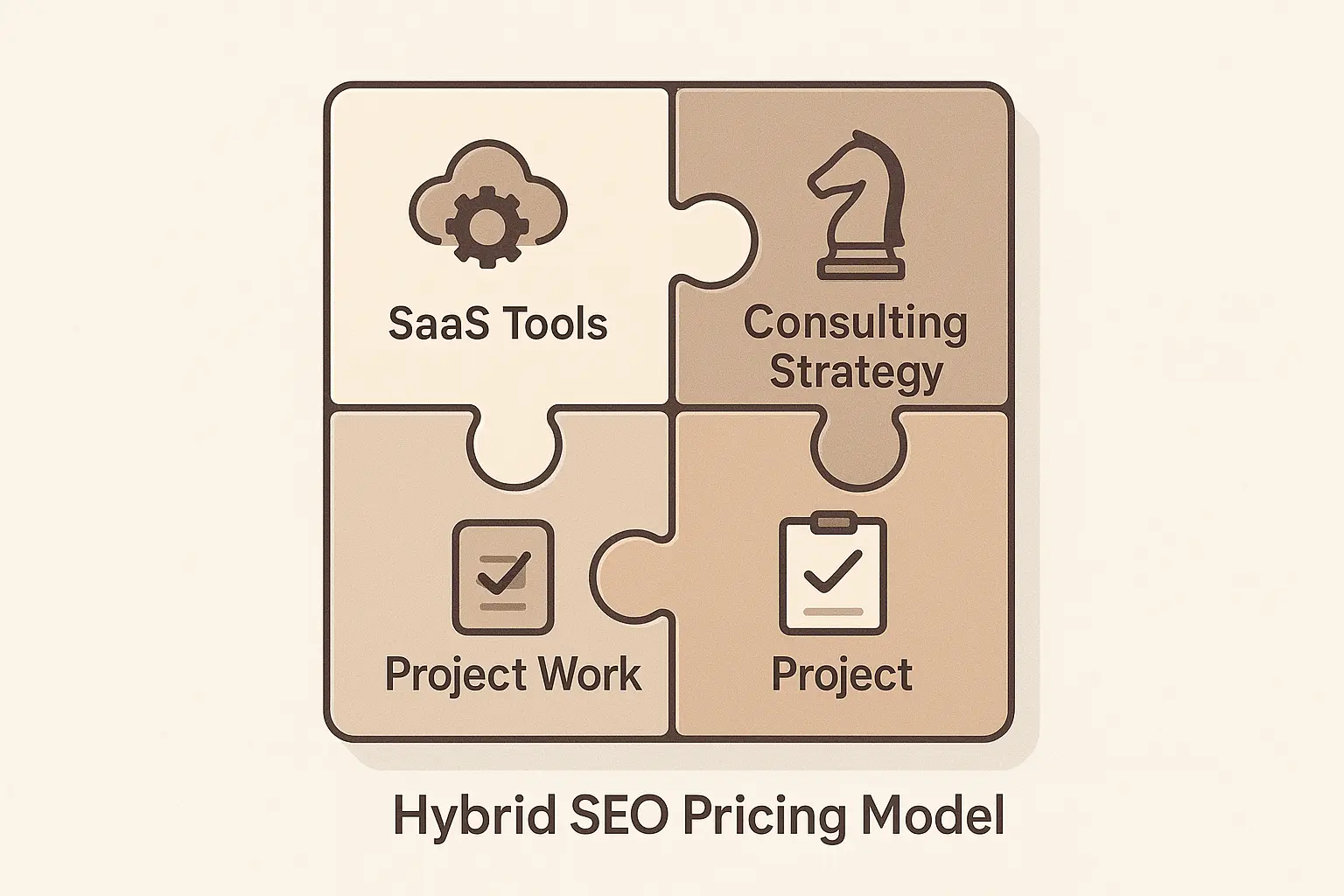You landed a great client. They love the results your agency is getting with SEO, and the relationship is solid. But there’s a quiet thought in the back of your mind: what happens when they get big enough to ask, “Should we be doing this ourselves?”
For many agencies, this question feels like a threat. It signals the potential end of a profitable retainer.
But what if it wasn’t an ending? What if it was an evolution?
What if, instead of losing the client, you could guide them on their growth journey, evolving your pricing and service delivery to increase your value and lock in the relationship for the long term? This isn’t just a hypothetical scenario—it’s a strategic path forward.
The Traditional Pricing Model: Your Starting Point
Most agencies begin their SEO journey in the same place: the monthly retainer. It’s the undisputed king of agency pricing, and for good reason. According to a massive Ahrefs survey of agencies, a staggering 74.7% of SEOs charge clients a monthly fee.
For agencies new to SEO, the simplest and most profitable way to structure this is by marking up a white-label SEO service.
Here’s the simple math:
- Your white-label partner charges you a wholesale rate for execution.
- You charge your client a retail retainer (market rates for small businesses often fall between $3,000 and $5,000 per month, according to First Page Sage).
- Your profit is the markup.
This model is ideal for getting started. It allows you to offer a high-demand service without the enormous overhead of building an in-house team. You own the client relationship; your partner handles the complex execution in the background.

Why Your Pricing Model Needs to Evolve
The white-label retainer is the perfect entry point. But as your agency and your clients mature, its limitations become apparent.
- The Growth Ceiling: A client might outgrow a hands-off approach and want more involvement.
- The Value Question: As the client relationship deepens, you want to be seen as a strategic partner, not just a reseller.
- The Margin Squeeze: Your profitability is tied directly to your partner’s costs, leaving little room to increase margins without raising client prices.
This is where the fear of the client leaving to hire in-house comes from. But thriving agencies see this not as a risk, but as the next logical step in the partnership. You just need a pricing model that can evolve with you.
Structuring Hybrid Fees: A Phased Approach to Profitable Growth
Instead of a single, static pricing model, imagine a three-phase journey that mirrors your agency’s growing confidence and capability in SEO. This approach allows you to maintain profitability at every stage while building a more valuable, resilient service offering.
Phase 1: The Foundation (100% White-Label Execution)
This is your starting point. You’re focused on sales, client management, and high-level strategy while your partner handles the heavy lifting.
- Your Role: Quarterback. You manage the client relationship and translate their business goals into SEO objectives.
- Partner’s Role: The entire execution team—technical audits, keyword research, content briefs, link building, and reporting.
- Your Pricing Structure: A simple markup on your partner’s wholesale retainer. Clean, predictable, and profitable.
Phase 2: The Co-Delivery Shift (Hybrid Model)
This is where the transformation begins. Your team is ready to get more involved, but you don’t need to hire a full department. You begin co-delivering the service using your partner’s tools and infrastructure.
- Your Role: Co-pilot. You take over client-facing tasks your team can handle—perhaps running reports, participating in content reviews, or managing client communications.
- Partner’s Role: Shifts from full execution to core support, handling the more technical or time-consuming tasks while providing the platform for your team to work from.
- Your Pricing Structure: This is the crucial change. You transition from paying a high execution fee to a hybrid model:
- A SaaS/Platform Fee: For access to the powerful agency SEO platform that automates workflows and provides the data.
- A Reduced Management Fee: For the partner’s continued expert support on complex tasks.
Your client-facing retainer can remain the same (or even increase!), but your costs go down, boosting your margins. You’re trading a portion of your partner’s cost for your team’s direct involvement.
Phase 3: The Enablement Goal (In-House with Partner Support)
You’ve arrived. Your team now has the confidence and skill to manage most of the SEO process independently. You’re no longer just an agency that offers SEO; you are an SEO agency.
- Your Role: The Pilot. Your in-house team manages the day-to-day SEO execution, strategy, and client success.
- Partner’s Role: Your invisible backbone. They provide the enterprise-grade automation, tools, and data that would be prohibitively expensive to build, plus high-level strategic oversight when you need it.
- Your Pricing Structure: Your costs are now primarily a predictable SaaS fee for the platform. The large management fee is gone, maximizing your profit margin on every client.
You’ve successfully built an in-house SEO division on the foundation your partner provided, creating an incredibly scalable and profitable revenue stream.

The Secret to a Smooth Transition: Communication
How do you manage this evolution without confusing your clients? By focusing on value.
This journey is about deepening your integration with their business. You’re not just outsourcing tasks; you’re building a capability that grows with them. This is a powerful story that justifies your retainer at every phase. After all, clients are paying for outcomes, and research consistently shows SEO provides the best ROI of any marketing channel for nearly half of all businesses.
Don’t shy away from the value of the technology you’re using. Data from Software Advice shows that 88% of businesses are willing to pay more for better software with more functionality. When you transition to the hybrid model, you’re not just managing their SEO; you’re giving them (and your team) access to a best-in-class platform. That’s an upgrade, not a cost-cutting measure.
Frequently Asked Questions (FAQ)
How do I explain the shift in billing from my partner to my client?
You don’t! This is an internal cost structure change. To your client, the monthly retainer they pay your agency remains consistent. The value they receive simply becomes more integrated as your team gets more hands-on.
What if my team isn’t ready for Phase 2?
That’s the beauty of a phased approach. You stay in Phase 1 for as long as it makes sense for your business. The goal isn’t to rush to Phase 3, but to have a clear path for growth when you and your clients are ready.
Does my client-facing price have to change?
No, and it probably shouldn’t. As your team takes on more work, the value you provide to the client increases. You’re becoming a more deeply embedded strategic partner. Your pricing should continue to reflect the high-value results you deliver.
How do I calculate my new margins in the hybrid model?
It’s straightforward. In Phase 1, your margin is (Client Retainer – Partner Fee). In Phase 2, it becomes (Client Retainer – [SaaS Fee + Reduced Management Fee]). Your profit margin increases because the combined cost of the SaaS and reduced management fee is typically less than the original full execution fee.

Your Path to Scalable SEO Delivery
Thinking about your agency’s growth in phases transforms SEO from a simple service you resell into a core competency you can build. It’s a strategic journey from relying on a partner for execution to leveraging a partner for enablement.
By aligning your pricing model with this journey, you create a win-win-win scenario: your client gets a deeper partnership, your agency builds a valuable in-house skill set, and your profitability grows at every step. Adopting a phased delivery model allows you to confidently scale your agency’s SEO services and build a more resilient and future-proof business.

